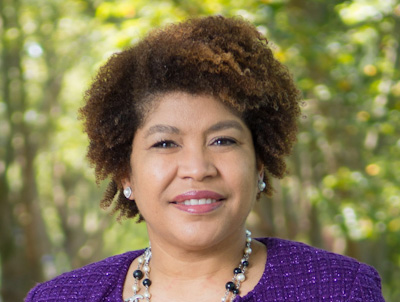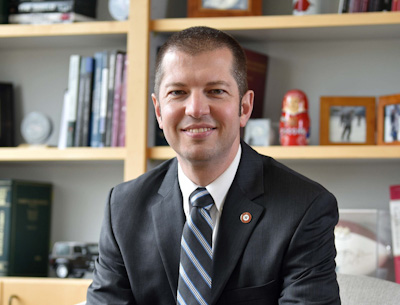Oregon's alternative pathway to the bar proves popular

Oregon’s new Supervised Practice Portfolio Examination that allows ABA-accredited law school graduates to join the state’s bar by working closely with a supervising attorney instead of taking the bar exam is gaining traction with candidates and potential employers. (Image from Shutterstock)
Updated: Oregon’s new Supervised Practice Portfolio Examination that allows ABA-accredited law school graduates to join the state’s bar by working closely with a supervising attorney instead of taking the bar exam is gaining traction with candidates and potential employers.
As of June 10, 47 candidates had applied to take that pathway, and 62 attorneys from 57 employers have applied to supervise a candidate, Kateri Walsh, Oregon State Bar director of communications, told the ABA Journal. Applications opened May 15. Candidacy is not limited to in-state graduates and there is no time limit on when they have graduated.
“The reaction has been phenomenal,” Ohio State University Moritz College of Law professor emerita Deborah Jones Merritt, who is working with the Oregon bar as a pro bono consultant, told the ABA Journal. “People who start this pathway in mid-May after they’ve graduated will be ready to be licensed in the fall, soon after people who’ve taken the bar exam.”
The additional pathway allows applicants to complete a 675-hour paid apprenticeship under a qualified, supervising Oregon-licensed lawyer. Requirements include leading “at least two initial client interviews or client counseling sessions” and “at least two negotiations,” along with “the production of at least eight pieces of written work product.” Taking the traditional bar exam remains an option to joining the bar.
At Willamette University College of Law, “we are seeing roughly 10% of our 2024 graduates as well as a few graduates from prior years pursuing the SPPE,” Interim Dean Jeffrey C. Dobbins told the ABA Journal.
In July 2023, 370 first-time examinees took the Oregon bar exam, according to the Oregon State Bar, and there were 82 first-timers in February 2024.
Oregon’s additional pathway aims to strengthen real-world lawyering skills. Almost half of law firm associates say law school didn’t prepare them for practice, with a lack of training in practical experience cited most often as the reason, according to a recent study by recruiting firm Major, Lindsey & Africa and Leopard Solutions, a legal data intelligence provider.
 “It is strange that the legal profession allows you to go to school, take a bunch of tests while in school and after school and never talk to a client—and that’s our current model,” says Tamara F. Lawson, dean of the University of Washington School of Law. Supervised practice “is more closely linked to competence than any 100 multiple-choice questions will ever be.” (Photo by Greg Olsen)
“It is strange that the legal profession allows you to go to school, take a bunch of tests while in school and after school and never talk to a client—and that’s our current model,” says Tamara F. Lawson, dean of the University of Washington School of Law. Supervised practice “is more closely linked to competence than any 100 multiple-choice questions will ever be.” (Photo by Greg Olsen)
ABA blessing
In May, the council of the ABA Section of Legal Education and Admissions to the Bar approved a policy shift that now allows states to use methods of licensure beyond the traditional bar exam.
That blessing could encourage other states to follow Oregon’s lead, says Brian Gallini, who served on that state bar’s Alternatives to the Exam Task Force.
“To take an organization that has taken no position on this pathway for a triple-digit number of years, and then to have it suddenly say, ‘You know what? States really should think about this’—that’s big,” he adds. “The wave has not yet crested.”
In March, the Washington Supreme Court approved, in concept, additional pathways to the bar involving supervised practice. No implementation dates have been finalized.
“It is strange that the legal profession allows you to go to school, take a bunch of tests while in school and after school and never talk to a client—and that’s our current model,” says Tamara F. Lawson, dean of the University of Washington School of Law. Supervised practice “is more closely linked to competence than any 100 multiple-choice questions will ever be.”
‘Market-driven’
To take the new pathway, Oregon bar candidates must find an attorney willing to supervise them before they and an employer each submit an application for approval, Merritt told the ABA Journal.
That makes the new option “very much market-driven,” says Gallini, who recently left Oregon’s Willamette University College of Law as dean. “If there are no employers who raise their hand and say, ‘I will be a supervising attorney,’ then there’s no pathway to licensure. This would never get off the ground.”
Oregon firms of all sizes are considering bringing on these provisional attorneys, he says. “They say, ‘Look, if we want to be the employer of choice and this is what the market of graduates wants, we have to have a program,’” Gallini adds.
The new pathway has several benefits, sources say. One is operating much like a medical residency in a way that can help ease access to justice issues.
“I might go to a rural area in Oregon saying, ‘I will do public defense during my licensure period, then I’ll go off and do something else,’” says Gallini, who now is a consultant to Oregon’s Licensure Pathways Development Committee. “Licensure can be used to serve the highest need areas in a particular state in a way that we’ve never thought about nationally.”
Five of the provisional licensees from Lewis & Clark Law School applied to work in the public sector, Associate Dean John Parry told the ABA Journal via email.
 Brian Gallini served on the state bar’s Alternatives to the Exam Task Force. “To take an organization that has taken no position on this pathway for a triple-digit number of years, and then to have it suddenly say, ‘You know what? States really should think about this’—that’s big,” he adds. “The wave has not yet crested.” (Photo by KJ Johnson)
Brian Gallini served on the state bar’s Alternatives to the Exam Task Force. “To take an organization that has taken no position on this pathway for a triple-digit number of years, and then to have it suddenly say, ‘You know what? States really should think about this’—that’s big,” he adds. “The wave has not yet crested.” (Photo by KJ Johnson)
Work immediately
Sources pointed to the availability of graduates to start work immediately after graduation instead of waiting six months to pass the bar as a perk that benefits both graduates and employers. Having on-the-job training early can prevent issues later, they said.
“So many of the mistakes that young attorneys get in trouble for can be avoided with a period of close mentorship at the beginning of a career,” wrote Joanna Perini-Abbott, professor and director of the Center for Advocacy at Lewis & Clark Law School, in an email.
Additionally, the ABA’s release of bar pass rates by race and ethnicity motivated the state to make changes, Gallini says. In 2023, white bar-takers in the U.S. had a first-time pass rate of 84%; Asians, 74%; Hispanics, 71%; and Blacks, 58%, according to the ABA.
“We’ve been saying, ‘This is just how it is,’” says Gallini, dean designate at Quinnipiac University School of Law in Connecticut. “In Oregon, we wanted to be challenging ourselves to create a skills-based pathway that would have a more equitable lens.”
‘Self-reflection’
As a result of the pandemic, the Oregon Supreme Court voted to grant emergency diploma privilege to the class of 2020.
“It caused a lot of self-reflection around, ‘Well, why are we doing it this way to begin with?’” Gallini says.
But some employers were concerned that the graduates who hadn’t taken the bar would not meet the high standards expected of new associates, Gallini says. “Very quickly, that narrative changed,” he adds.
A 2020 paper by William Wesley Patton of the USC Gould School of Law found that there is little difference between the level of protection provided to the public whether an attorney passed a bar exam or was admitted via diploma privilege.
Though licensure under the new path is not portable to other jurisdictions, the Oregon Bar Exam currently offers applicants a Uniform Bar Exam score that is. The exam itself faces an overhaul in July 2026, as Oregon becomes one of the first to administer the NextGen bar exam.
Updated June 13 at 11:23 a.m. to clarify a quote from Ohio State University Moritz College of Law professor emerita Deborah Jones Merritt.
Write a letter to the editor, share a story tip or update, or report an error.



